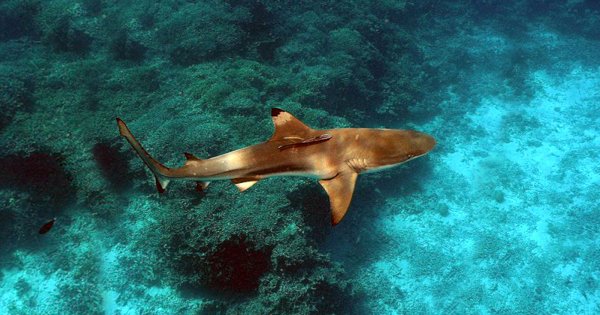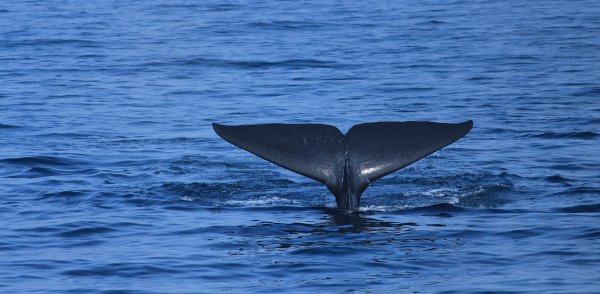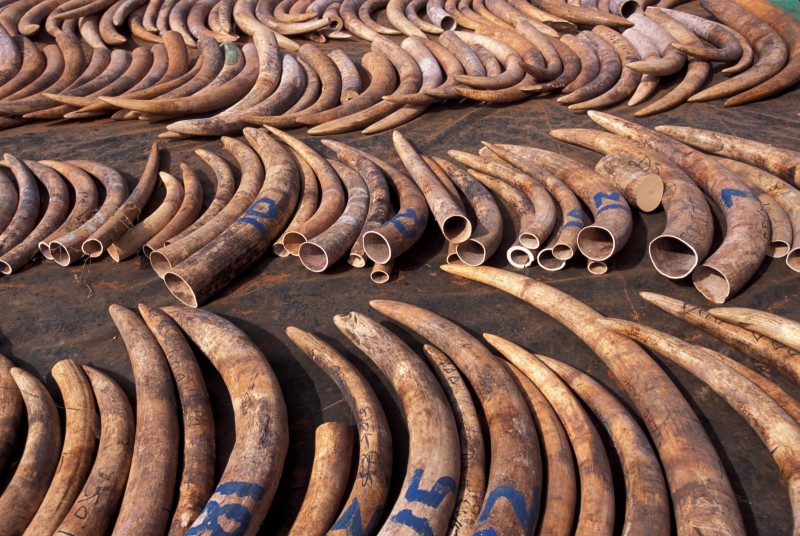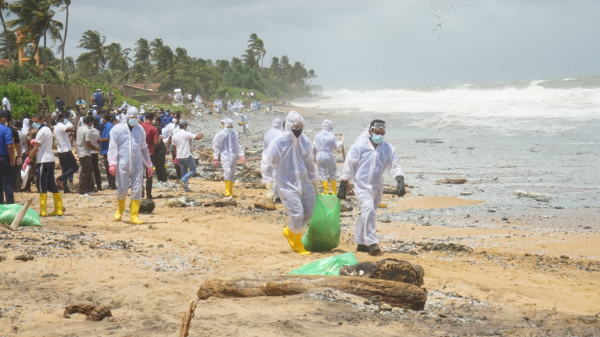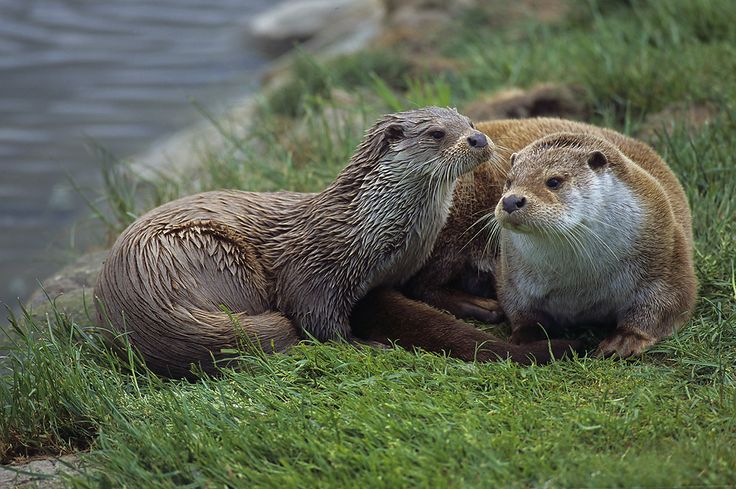
Yes, you read that right. Often disregarded or dismissed as the ever present mongoose, otters have been an important part of Sri Lanka’s ecosystem for many decades. However, according to the International Union for Conservation of Nature (IUCN) Red List otters were categorised as “Near Threatened” since the year 2004.
Environmentalist, ecologist, and attorney-at-law, Jagath Gunawardena, told Roar that while the otter population used to be vast, it is now very rare to see the mammal around, partly thanks to destruction of their habitat.
Meet The Ceylon Otter
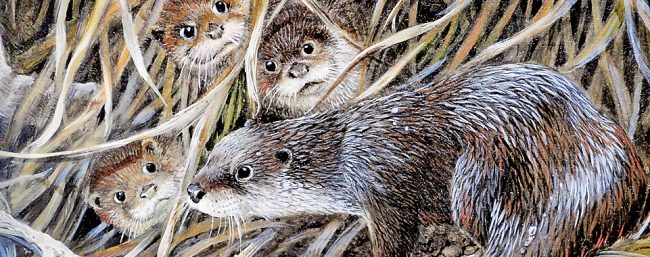
Otters, by renowned Sri Lankan wildlife artist, Gamini Ratnavira, who illustrated Asoka Yapa’s book “Mammals of Sri Lanka”.
Otters in Sri Lanka are often found from the sub-species Lutra lutra nair or the Eurasian otter. In Sri Lanka, the Eurasian otter has been dubbed the Ceylon Otter.
Lesley Wright, a spokesperson from the IUCN, told Roar that in 1996, the otters were found to be living in the headwaters of all 5 major river systems in Sri Lanka, but not in the estuaries.
All otters are shy and elusive mammals, but the Eurasian otter is one of the most elusive. According to the IUCN Otter Specialist Group, the Eurasian otter is only about a metre long, weighing roughly eight kilograms. Their fur is roughly a dark brown on the back, shading to buff or grey on the belly and throat.
The otter’s diet mainly consists of fish, but they also eat various types of water birds, crayfish and frogs. Breeding can occur throughout the year, though locally some seasonality may be seen, correlating to prey density.
This species is the most widely distributed of all the otters, ranging throughout Eurasia up to the Arctic Circle, south to North Africa, Sri Lanka and Indonesia.
More About Otters
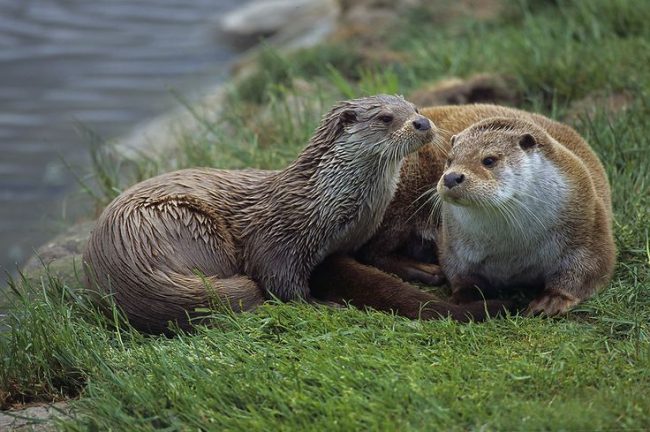
The European otter, Lutra lutra. Fun fact: otter poop is known to have a distinct smell. Image courtesy wilddezi.com
Although sighted very rarely in Sri Lanka, these furry creatures are quite adorable and fun to watch. Interestingly, an otters’ poop has a distinct smell, as well as it’s very own name. The poop, also known as “spraint”, is often known to smell somewhat like jasmine tea. Like most animals, otters too use it to mark their territory.
However, one thing that distinguishes otters from other mammals is the fact that they designate certain areas to use as latrines in their community.
Otters are also open to surrogacy and adoption, as we know from the famous case of Pup 681 who was adopted by an otter mom who gave birth to a stillborn pup.
Otters love playtime. An otter family is largely made up of the mom and pups, and when they’re not eating or sleeping, they’re playing. They enjoy water sports, and are known to build slides by the river to entertain themselves.
Near Threatened
Unfortunately, Sri Lanka’s otters don’t have much to be happy about. While media outlets and environmentalists often focus on the conservation of larger mammals such as leopards and elephants, the otter often slips through the cracks, and is neglected. According to the IUCN, all species of the otter are considered near threatened, “due to an ongoing population decline, but at a rate no longer exceeding 30% over the past three generations”.
Gunawardena confirmed that the otter population in Sri Lanka has seen a decline.
“Most otters are on the decline mainly because their habitats have been destroyed,” he said, adding, “Other reasons for the decline include them being subjected to roadkill, dogs, and pollution.”
The IUCN told Roar that water pollution is one of the major threats towards Eurasian Otters.
“It has caused recent local extinctions from which Western European populations are only now recovering as a result of environmental improvements and focused conservation efforts. The main dangers are biomagnified dieldrin, DDT/DDE, PCBs and Mercury which affect otter physiology directly, and reduction of food supply due to nitrate-induced eutrophication from agricultural runoff and untreated sewage, and acidification from atmospheric pollutants,” they said.
The IUCN further added that oil spills threaten coastal populations while in parts of the range, illegal hunting is a major issue. In Western Europe and Sri Lanka, road traffic accidents are becoming a major cause of mortality.
Conservation Efforts
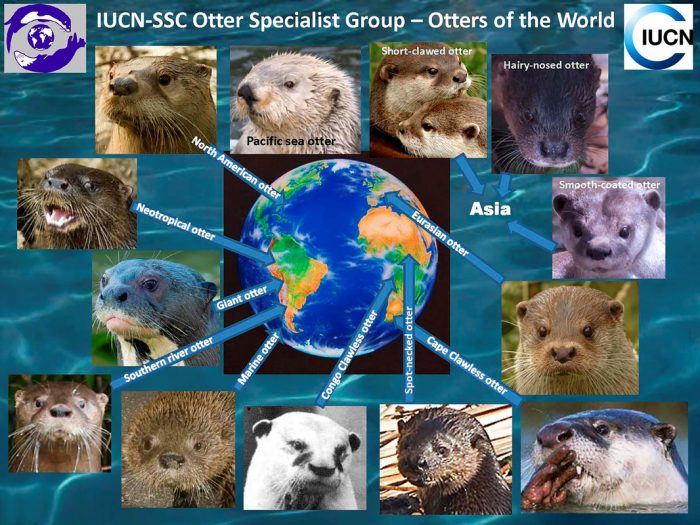
Otters of the world – Courtesy IUCN
In an effort to protect the species, otters have been designated their very own awareness day; on May 25, International Otter Awareness Day was celebrated across the globe.
About time, because, as noted in an article published by Peradeniya University’s now retired Senior Zoology Professor, Padma Kumari de Silva, otters are considered an insignificant mammal in Asia.
“Otters receive very little attention from the general public and the respective governments,” she lamented.
In fact, because of its very elusive nature, many people are unaware that there is an animal of this nature living in freshwaters. The conservationists invariably focus their attention towards larger mammals. Therefore, the IUCN has given priority to conduct otter awareness programmes in addition to the general otter surveys throughout Asia. As a result, several awareness programmes and otter workshops have been carried out over the last two decades in Asia.
The IUCN’s Wright told Roar that it is very important to enforce conservation legislation and initiate long-term monitoring plans for the rare and vulnerable otter species in Asia.
“In some countries, especially in Southeast Asia and West Asia, legal protection of the otter does not exist. In some others, although legal protection is given to the otter, it is not enforced in any significant manner,” Wright said, adding, “Therefore, due emphasis should be given not only to the need for legal protection of the otter and its habitats, but also to the effective implementation of such protection laws by the respective governments.”
However, de Silva, in her article, added that it is important to stress that otter conservation is a low priority area to the governments of developing countries, which have more important problems, including poverty alleviation, demanding their immediate attention.
In general, however, conservation of biodiversity has gained much recognition in the recent past in Asia, and it is important to keep governments informed on the plight of the otter in the deteriorating wetlands, and request immediate implementation of conservation measures. As it is, not a lot of Sri Lankans are aware that we share our island with these cute creatures ‒ if we’re not careful, otters will end up on the list of animals that we only once had.
Featured image: the European otter, Lutra lutra. Image courtesy wilddezi.com

